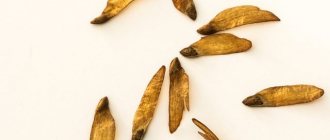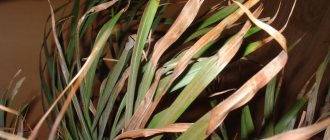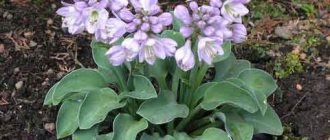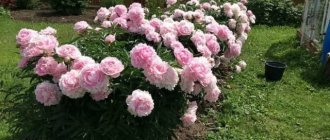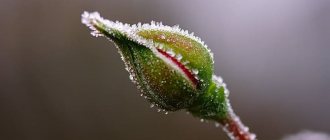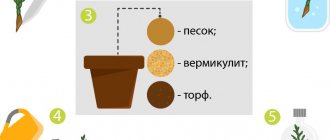In any case, propagating peonies by seeds is a fascinating business. Waiting for many years for flowering will only fuel your interest, and the result, whatever it may be, will give you extremely positive emotions. Believe me, you will love any peony bred with your own hands more than the most beautiful plant bought for a lot of money. After all, you have joined real creativity, the process of creation.
General information
Peony is a herbaceous or shrubby perennial plant of the Peony family. Most varieties of herbaceous peonies, the number of which approaches 5,000 and is constantly growing, are bred either from the milky-flowered peony or by crossing it with other species.
Peony flowers and leaves are very decorative; they are beautiful both in a garden composition and in bouquets. This fragrant flower is a symbol of China. It is perhaps difficult to find a farmstead where at least one bush is not grown - this is facilitated by their beauty, sophistication and ease of planting and caring for peonies in the open ground.
Peonies are most often propagated by dividing the rhizomes - this is a simple and reliable method; varietal characteristics are always preserved. Much more difficult is seed propagation. This activity is quite labor-intensive and you have to wait a long time for the result - after all, about 5 years pass from the moment of sowing the seeds until the appearance of the first flowers; tree-like (Chinese) peonies bloom even later.
In addition, we cannot predict and plan the results - most likely the resulting flowers will be very different from the mother plant, perhaps having almost nothing in common with it.
The peony fruit is a star-shaped complex multi-leafed plant. Each leaflet contains several large shiny black or brown seeds. When ripe, the leaflet opens along the seam. Some varieties of peonies do not produce seeds at all.
Features of seasonal propagation: what is best and what methods are suitable
To successfully propagate beautiful peonies, you need to know that each method has its own suitable time of year.
in spring
In the spring, it is recommended to resort to the method of dividing the rhizome. Before dividing the peony, you need to remember that this procedure is carried out between the last days of April and the first week of May. At this time, active root growth begins.
Only in spring, early, as soon as the snow melts, do peonies reproduce using aerial cuttings. Before propagating peonies in the spring, you need to make sure that there is no risk of frost returning.
Why do peonies from seeds differ from the mother plant?
It is almost impossible to grow peonies from seeds that are similar to those whose seeds you collected. In the best case, the similarity will remain in 10% of seedlings. Why? Because this is the law of nature.
The peonies that we grow in our gardens are most often the result of selection of the milkweed peony and its relatives. The basis of breeding is selection and hybridization. Through selection, the properties of the plant we need are fixed, and through hybridization, new varieties appear. This is, of course, a very simplified approach.
The plants from which we collect seeds do not grow in a vacuum. We may have many varieties of peonies on our site. Even if this is not the case, peonies are grown in the backyards of near and distant neighbors. Bees and other insects, without whose pollination the seeds will not form, do not sort out the varieties and land on any flower they choose.
Breeders involved in developing new varieties most often keep plants in isolated greenhouses and greenhouses, where they are pollinated by hand. This is painstaking, complex work that requires special knowledge and skills. In addition, the seeds of hybrids tend to split varietal characteristics, which in 90% of cases has a bad effect on the appearance of the flowers, and in 1% leads to the emergence of a new variety, which is subsequently polished. Further selection of peonies is carried out using the selection method already during vegetative propagation.
Any gardener knows that you won’t get anything worthwhile from seeds collected from cucumber or tomato hybrids the next year. These laws also apply to flowers.
The plant, pollinated by bees and butterflies, produces seeds. Each plant, grown even from the seeds of one multi-leafed plant, may differ in color, double size and flower size. This is fine. The more complex the variety, the less likely it is that the plant grown from seeds will resemble the original one. But it's possible.
It will be useful to read:
Timing for planting petunia seedlings Petunia (Petunia) is one of the most popular flowers, attractive and quite unpretentious. They look very impressive...
Reproduction by partial layering
Propagation of peonies in this way is similar to propagation by vertical layering. The only difference is that not the entire uterine bush is blocked, but only a small part of it. The advantage of this method is that most of the mother plant continues to grow and bloom as usual. Therefore, the process of obtaining daughter bushes from it will have almost no effect on its health.
Advice! When propagating peonies by partial layering, remove buds only from those shoots that fall into the fence. Allow the remaining buds to open.
Features of seed germination
Peony seeds hatch rather slowly, which is why the emergence of seedlings is delayed. If you sow them before winter, with the arrival of warmth the seeds begin to germinate, only then the root appears first. In order for growth buds to appear, the plant needs another cold period. As a result, it is actually likely that seedlings appear in the second year.
However, it is possible to speed up germination by cheating nature a little. The best way to do this is to collect your seeds without waiting for them to fully ripen. We will not indicate the dates for collecting seeds - they differ in different regions. Just wait until the multi-leaflet bursts, and the not yet dark seeds can be seen through the half-opened flaps. This means it's time to plant the seeds.
But it may happen that the seeds are ready for planting, and the air temperature outside is quite high. If you are planning on germinating peonies at home, where you can control the temperature, start planting. If the landing is planned on the street, do not rush. Remove the seeds from the boxes, mix them with wet sand and place them in the refrigerator. There they will wait for more suitable weather. Just remember to check the moisture content of the sand.
If you are planning to buy seeds, keep in mind that long-term storage increases the likelihood of low or slow germination. How to grow peonies from seeds and speed up germination, further.
Reproduction by pruning
If you need to get no more than three daughter plants from one mother bush, then this method of propagation will seem to you the simplest:
- In early spring, rake away the soil from the mother bush so that the upper buds and the upper part of the rhizome are exposed.
- Using a shovel, trim the bush so that you get root blocks with 2 or 3 buds. The length of the rhizomes should be 8-10 cm.
- Gently rinse the roots and let them dry.
- After a while, examine it. If there are suspicious places (rot, mold), cut them off.
- Treat the rhizomes in a solution of potassium permanganate or in a solution of any fungicide.
- Sprinkle the cut areas with ash and plant in prepared planting holes.
- Moisten the soil.
Peonies can be propagated by pruning the mother bush in the fall. But this must be done no later than September. Otherwise, the daughter bushes will not have time to take root well. This can cause their death in winter.
Planting peony seeds in open ground
We will assume that the weather is suitable and you collected the seeds on time. It's time to start planting. The least amount of hassle awaits you if you plant the seeds directly in open ground. But keep in mind that this propagation method is not suitable for regions with cold climates and harsh winters - there the seeds will simply freeze.
The landing site must be prepared in advance. Dig up the soil, remove weeds and stones. If your soil is light loam, consider it done. If not, add sand and either lowland peat (high-moor peat has an acidic reaction) or well-rotted mullein to the ground. If the soil is acidic, add ash, lime or dolmite flour at the rate of 1 liter jar per 1 square meter. Water well.
The next day we begin planting. You can plant the seeds in a shallow box, digging them into the ground, or you can directly into the ground, just mark the planting site well so that you can easily find it in the spring. When sowing directly into the ground, make shallow trenches at a distance of about 20 cm from each other and distribute the seeds, placing them every 10-15 cm. This is done to make it easier to care for the seedlings. Plant the seeds to a depth of approximately 2 cm.
With the onset of cold weather, mulch the planting site well with a thick layer (at least 10 cm) of foliage, dry mullein or straw. During harsh or little snowy winters, it is good to cover the top of the plantings with spruce branches or increase the layer of mulch to 20 cm.
It will be useful to read:
Details about growing verbena seedlings Bright, attractive and at the same time modest, unpretentious - verbena is popular among gardeners thanks to...
Reproduction by vertical layering according to the Shlomin method
G.K. Shlomin created his own modification of the peony propagation method using vertical layering in 1982. Here's what he did:
- I cut out the bottom of an open tin can, washed and disinfected it.
- In the spring I put a jar on a peony shoot.
- As the shoot grew, he added soil made from river sand, black soil and rotted manure into the jar. All components were taken by him in equal shares.
- To prevent the soil inside from overheating, he wrapped the jar with a layer of cardboard and polyethylene. The result is a kind of thermos that maintains the optimal temperature inside the container.
- Regularly watered the soil in the jar to stimulate the growth of rhizomes.
- When autumn arrived, Shlomin ran a sharp knife under the jar to cut off the rooted shoot.
- He took the shoot out of the jar and planted it in the prepared hole.
Germinating seeds indoors
Seeds are germinated in advance in regions where direct planting in the ground is impossible due to climatic conditions, or when they want to reduce the time from sowing to flowering by another year.
Here, before planting in a permanent place, 3 phases must pass, namely: warm phase - cold phase - warm phase.
First warm phase . Take a wide bowl, pour 1-2 cm of light fertile soil on its bottom, and on top - a 3 cm layer of sand. Moisten the substrate well, you can pre-heat it. Spread the seeds over the surface of the sand, lightly sprinkle with sand, and pour warm water again. Cover the bowl with glass or wrap it in transparent film to create a greenhouse effect. Before planting, it is advisable to soak the seeds in a solution of “Heteroauxin” or “Epin” for 6-10 hours.
Next, your task will be to maintain the required temperature, ventilate and moisten the soil (about 15%) until roots 1-2 cm long appear. Daytime temperatures should fluctuate between 25-30 degrees, and night temperatures should be about 15. Use batteries for this. electric heating pads or lamps.
Cold phase . For those plants that have roots, it is time for the cold phase. Carefully remove the seed from the substrate, slightly pinch the root and plant it either in a peat tablet or in a small peat glass. Arrange the planted plants close together on a tray or large tray. Now the temperature of the seedlings should be 6-10 degrees. Monitor the humidity (it should be about 10%) and ensure that there are no sudden changes in temperature. The cold phase lasts 3-4 months. Daily ventilation is necessary.
Second warm phase . For those plants whose first leaf has appeared, the cold phase is over, and the second warm phase has begun. Bring them into the house or greenhouse and keep them at a temperature of 18-22 degrees, water regularly.
Warm phase
Seeds should be sown in a wide, shallow container in damp sand. It is placed on an electric heating pad (a heating radiator will also work). The sand should be heated to 30 °C, after which it is cooled and warmed up again, periodically moistening it.
The procedure takes about two months until the seeds burst and roots appear. Immediately after this, they are removed from the sand, the roots are pinched and placed in a container with a soil mixture or in peat pots, lightly sprinkling them. This will significantly reduce the likelihood of injury to seedlings when planting in the soil.
Landing in a permanent place
Peony seedlings should be replanted in the fall to a permanent place as soon as the summer heat subsides. We place young plants as it is recommended to plant adult peonies, at a distance from each other of at least half a meter for dwarf varieties and about 1 meter for regular-sized varieties.
Keep in mind that despite all efforts, it will be possible to accelerate germination only for 1/3 of the seeds. The rest may rise next year, and even the year after. A year after planting in a permanent place, peonies should be grown from seeds in the same way as plants propagated by division.
Even if it doesn’t work out to create a new variety of peonies, believe me, you will definitely enjoy it. And self-grown peonies will decorate your garden and become a source of pride.


